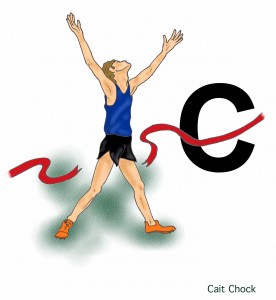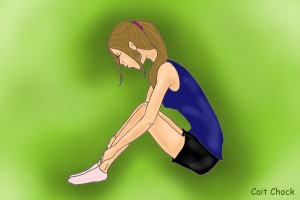My last few runs I was feeling flat. Just sluggish; you know the feeling, like you can’t exactly pinpoint why you’re running a particular pace and it’s feeling a lot harder than it should.
I was bemoaning this (what, me complain?!?! I try to not make it a habit but after a few junky runs my mood starts to swing harder than a menopausal woman going through hot flashes) to one of my best friends. Thankfully said friend is also a genius, and is savvy on all things bodily related, “You’re just stuck in one gear and have to jolt yourself out of it.”
What did Doctor Al prescribe? Adding in some pick-ups through the course of my regular run. I know what you’re thinking, “Wait, but I’m already feeling tired and in a funk just going steady on my run, so now I’m supposed to try and go faster, and that somehow is going to make me feel better? Umm…thanks but no thanks.”
But before you discount this, let me break it down for you. Running is a very repetitive action, I mean unless you’re dodging a bullet or stray dog, you’re pretty much just moving forward and doing the same thing mile after mile. Your body, after years of this, will basically build up a muscle memory and you could pretty much run on autopilot.
The thing is, is that sometimes, neurologically, you can get stuck in an autopilot rut. If you’re not changing up paces or speeds, such as the case with just a regular, steady run, you can get stuck in one gear.
That gear can leave you feeling stale. To break out of that you have to shock the muscles with a different gait, pace, a shock to the system that wakes them up. Even just a short burst at a different speed can do it; try doing a stride of about 100 meters or 30 seconds and then settle back. I’ll bet that when you do return to the first pace it will feel a little better, your legs a bit fresher.
I’ve been testing it out, I did it today and on Sunday for my long run; in the middle of my run I did 12 x 30 second pick-ups with a little over a minute between them. Here’s how I felt: first four miles felt wonky and just flat, the first few pick-ups I felt like I was hardly moving very fast, but by the last ones I was having fun and, what, was that a turnover I felt?! The last miles of my run after the strides I was able to go faster than the first ones and I felt better doing them.
It sometimes just takes a shock to the system to switch you out of one gear and into the next. If you’re in a building or base phase, or have a couple days between hard workouts, try interjecting some pick-ups on your steady runs. You don’t have to do any certain number, just a few can do the trick. The fun thing is that they are totally unstructured and you can play around with it, just go harder for the sake of it, pick an ambiguous distance, and then just enjoy the run.
1) Have you tried switching gears to liven up dead legs?
2) What other suggestions do you have for runs where you’re just feeling flat?
3) Winter is here, I almost got blown away out there today, how do you handle winter weather?
Thankfully I’m in CA and even our winter weather is weenie weather to most of the US!
















